Bakhchisaray can be considered one of the most interesting places of the "excursion" Crimea. Located among picturesque mountain plateaus and valleys, surrounded by ancient cave cities, the former capital of the Crimean Khanate has fully preserved the charm of past eras.
The most significant cultural object of Bakhchisarai is the Khan's Palace, where numerous excursions rush to get to know the history and culture of the Crimean Tatars. On the streets of the old city quarters, among the terraces covered with greenery, cozy restaurants are hidden, where guests can be served delicious dishes of national cuisine. In the vicinity are several abandoned cave cities, once prosperous and populous.
The atmosphere of Bakhchisarai is permeated with the color of the Crimean Khanate that has gone down in history. It is especially felt in the palace garden, near the walls of city mosques and on the narrow stone streets of the historic quarter.
What to see and where to go in Bakhchisarai?
The most interesting and beautiful places for walking. Photos and a short description.
- Khan's Palace
- Fountain of tears
- Catherine's Mile
- Crimea in miniature in the palm of your hand
- Devlet Saray Museum Complex
- Assumption Cave Monastery
- Holy Annunciation Monastery
- Ismi Khan Jami Mosque
- Mosque Tahtali-Jami
- Church of the Feodorovskaya Icon of the Mother of God
- Skete of Saint Anastasia
- Chufut-Kale
- Karaite cemetery Balta Tiymez
- Eski-Kermen
- Tepe-Kermen
- Mangup-Kale
- Kachi-Kalyon
- Sphinxes of Churuk-Su
- Sphinxes of the Karalez Valley
- Mount Besh-Kosh
Khan's Palace
A unique and the only monument of the palace architecture of the Crimean Khanate in the world. The construction of the complex began in the 16th century under Sahib I Gerai (Girey). Subsequently, each ruler made his own changes to the appearance of the palace. In 1736, the khan's residence was burned down after the capture of the capital by the troops of the Russian Empire. Later, the palace was restored according to the surviving description. In the XVIII-XX centuries. Several restorations have been made. Today, the building is part of the Bakhchisarai Historical and Cultural Reserve.

Fountain of tears
Fountain-selsebil of the XVIII century on the territory of the Khan's palace, which became famous all over the world thanks to the famous poem by A.S. Pushkin "Fountain of Bakhchisarai" The legend says that the cruel Khan Kyrym Gerai (Girey) fell in love with the young slave Dilyare and made her his wife. But she soon died in his harem from longing. The Khan suffered so much after her death that he called the master and ordered the erection of a monument - a “stone of tears”, in which all the pain of his loss would be embodied. This is how the Fountain of Tears was born.

Catherine's Mile
A group of stone road signs installed in 1784-1787. on the route of Empress Catherine II from St. Petersburg to the Crimea. Five such monuments have been preserved on the territory of the peninsula. One of them is located next to the Khan's palace in Bakhchisarai near the bridge over the river Churuk-Su. During her visit, the ruler stayed in the palace chambers, specially renovated for her arrival.
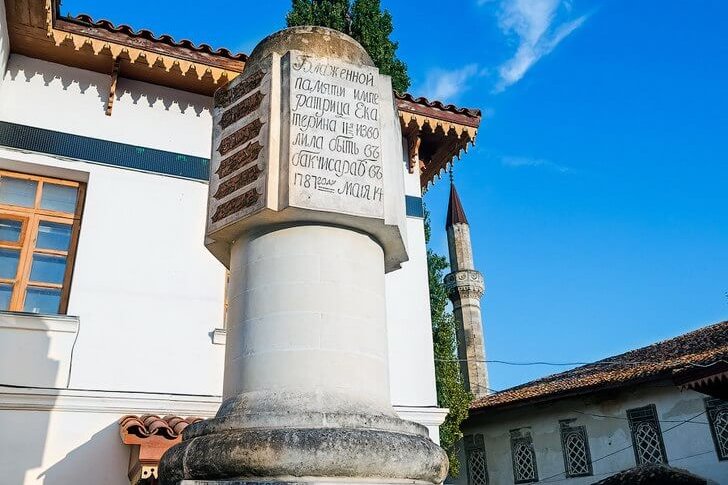
"Crimea in miniature in the palm of your hand"
Miniature Park, located on an area of 2.5 hectares near the Khan's Palace. It was opened in 2013 to promote Bakhchisaray as a tourist destination. All the main attractions of Crimea are presented here in reduced sizes: palaces, cathedrals, obelisks and other architectural monuments. In total, the park has 53 miniatures made on a scale of 1:25.

Devlet Saray Museum Complex
The archaeological complex, located on the site of the first capital of the Crimean Khanate in the village. Staroselie, which is located near Bakhchisaray. Devlet-Saray was previously a full-fledged khan's palace. Only the mausoleum-tomb and the building of the madrasah have survived to this day. Since 2011, the Larishes Museum has been operating on the territory of the complex, which presents an interesting exposition with artifacts from the period of the Crimean Khanate: engravings, maps, manuscripts and books, as well as works by contemporary Crimean artists.

Assumption Cave Monastery
An Orthodox monastery in the tract of Mariam-Dere, founded in the 8th century by monks from Byzantium. In the XIII-XIV centuries. The monastery fell into decay, but then revived again. During the Ottoman conquest, he managed to avoid destruction. Until the 18th century, the monastery was the main religious center of all Crimean Christians. During the XVIII-XIX centuries. its territory was significantly expanded, several new buildings appeared. In 1921 the monastery was abolished. Its re-revival began in 1993.
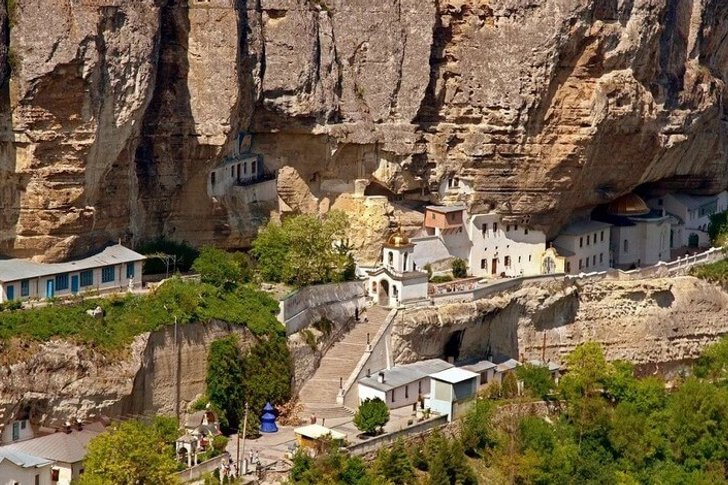
Holy Annunciation Monastery
The current male monastery, which is located in artificial grottoes of the VI century within the Mangup plateau on the slopes of steep cliffs. The monastery was founded in the 14th century, but after the conquest of the Crimea by the Ottoman Turks, it stopped its work for a long time. The monastery was restored only at the end of the 20th century. From the platforms in front of the grottoes, a magnificent panorama of the surroundings of the monastery opens up.
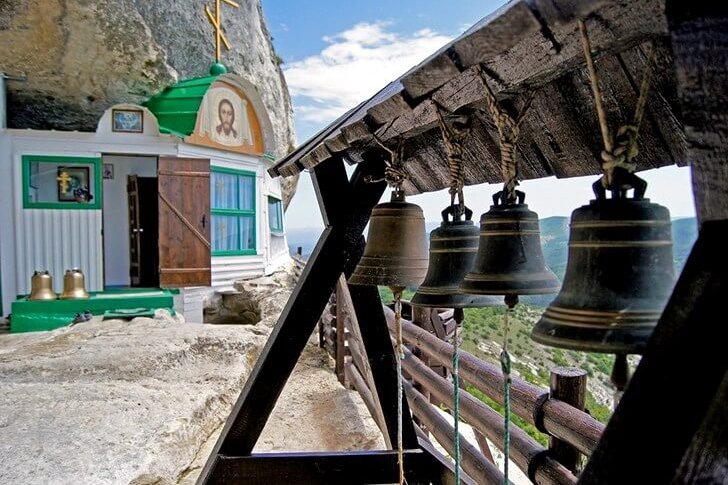
Ismi Khan Jami Mosque
Muslim temple of the XVI-XVIII centuries. on the territory of Bakhchisarai, built on donations from a relative of one of the Crimean khans. The building was built in a mixed style of classicism and baroque. The size of the mosque is small, it lacks the traditional tower-minarets. In the 20th century, the building housed warehouses for a long time. At the moment, the mosque has not yet been restored.
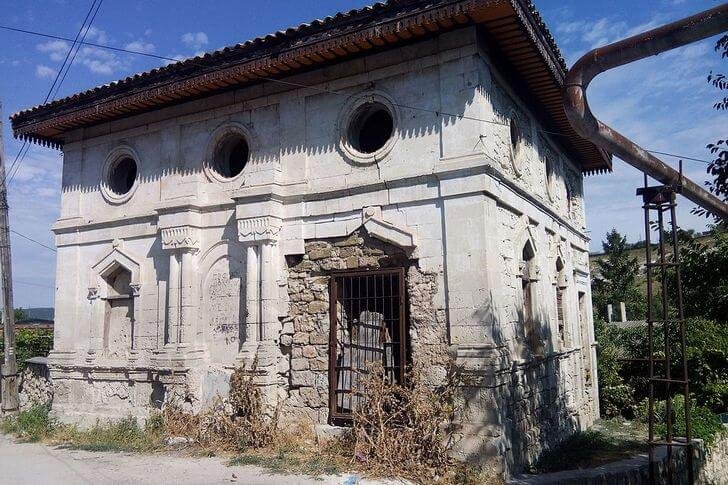
Mosque Tahtali-Jami
The temple was erected in 1707 at the behest of the daughter of Khan Selim I Giray (Girey). The high minaret of the mosque dominates the architectural development of the old quarters of Bakhchisarai. The name of the building, translated from the Crimean Tatar, means “a mosque made of planks”, since wooden beams were used in the construction and masonry of the walls. Tahtali-Jami is a functioning Friday mosque.

Church of the Feodorovskaya Icon of the Mother of God
Temple of the beginning of the 20th century, erected for the 300th anniversary of the accession of the Romanov dynasty to the Russian throne. Like many other religious institutions, the church was closed in the 1930s. The premises were used for a long time as a granary and a stable, in the post-war years a cinema operated here. In the late 1990s - early 2000s. Reconstruction was carried out with donations from the Christian community.
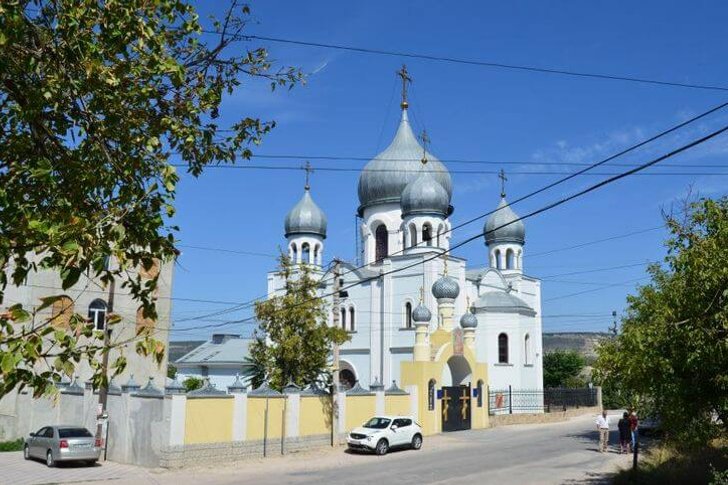
Skete of Saint Anastasia
An ancient cave monastery, approximately founded in the 8th century (according to indirect evidence) by Greek monks. It is located about 8 km from Bakhchisaray on the territory of the cave city of Kachi-Kalyon. Over the past centuries, it has experienced several periods of desolation and revival. A small number of monks lived here until the 1930s. In 2005, the skete was restored after a long break by the brothers of the Holy Dormition Monastery.

Chufut-Kale
The city-fortress of the 5th-6th centuries, founded on the very border of the Byzantine possessions. At first, the Alans lived in Chufut-Kale, then it was captured by the Kipchaks. After the peninsula passed under the control of the Horde khans, the fortress turned into the center of a small principality - a vassal of the Golden Horde. In the 14th century, Karaites began to settle in the city, who left Chufut-Kale in the 19th century after the restriction on the places of residence of this ethnic group was lifted.
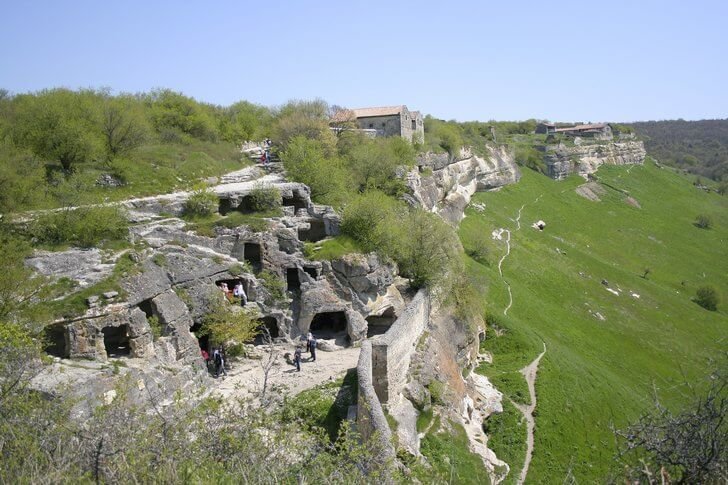
Karaite cemetery Balta Tiymez
An abandoned necropolis near Chufut-Kale with 7,000 stone gravestones. This place was considered sacred, as it is located on the territory of a centuries-old oak grove. Oaks were considered by the Karaites as sacred trees. Burials at the cemetery were also carried out after the representatives of this nationality left Chufut-Kale. The most recent graves date back to the beginning of the 20th century.

Eski-Kermen
A cave city in the vicinity of Bakhchisarai, founded in the 6th century as a frontier defensive fortification. The development of Eski-Kermen began in the 10th century and reached its peak in the 12th-13th centuries. At that time, more than 2,000 people lived on its territory. In 1299 and 1399 the city was twice ravaged by the Tatar-Mongols, after which it did not recover. Buildings dating back to the 6th-12th centuries have survived to this day.
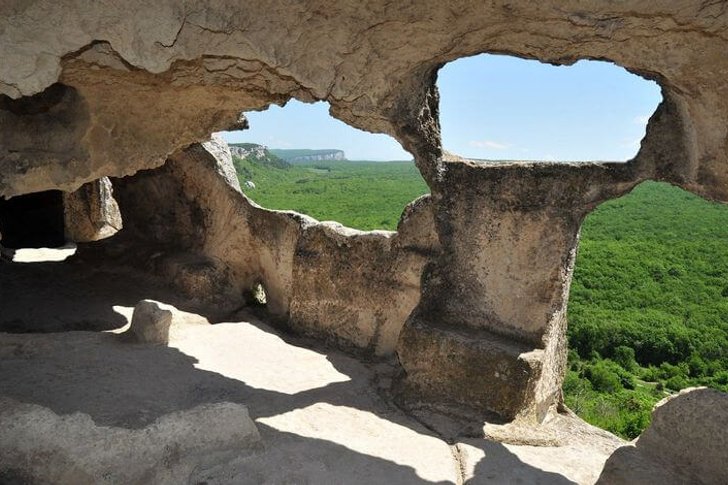
Tepe-Kermen
Another cave city in the vicinity of Bakhchisaray, dating back to the 6th century. More than 230 caves have been found on its territory. According to some sources, Tepe-Kermen served as a defensive fortress, according to other sources, it was a monastery. The city existed until the XIV century until it was devastated as a result of the next campaign of the Golden Horde. Only ruins have survived to this day.
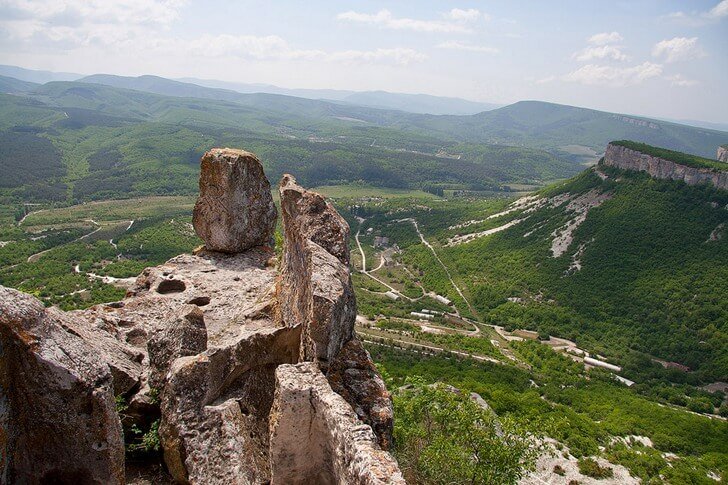
Mangup-Kale
The Mangup-Kale fortress is located near the village of Zalesnoe at an altitude of 583 meters above sea level. It is believed that the first Scythian settlements appeared on this site as early as the 3rd-4th centuries, since the 7th century the city became part of the Khazar Khaganate. Later, Mangup-Kale was the capital of the late Byzantine principality of Theodoro and a Turkish fort. In the 18th century, the last inhabitants, the community of Karaites, left the settlement. Since then, it has been abandoned.

Kachi-Kalyon
Cave monastery in the valley of the Kacha River, located on the territory of the Bakhchisarai region. In ancient times, it stood at the crossroads of trade routes that connected the steppe part of Crimea with the sea coast. The inhabitants of Kachi-Kalyon were engaged in the production of wine, as evidenced by the preserved wineries and workshops where the utensils for storing this drink were produced.
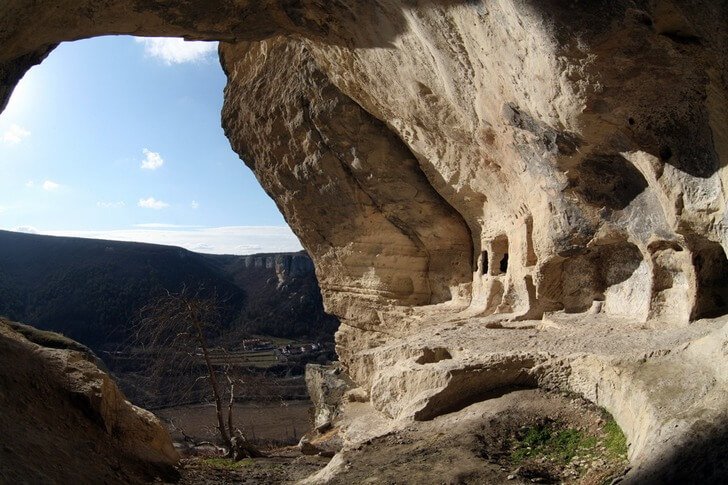
Sphinxes of Churuk-Su
Natural stone sculptures up to 20 meters high, located in the valley of the Churuk-Su River (translated from the Crimean Tatar, this name means "rotten water"). The giants were formed in a natural way as a result of centuries of weathering of rocks, consisting mainly of limestone rock. The area was declared a natural monument of regional importance in the 1960s.
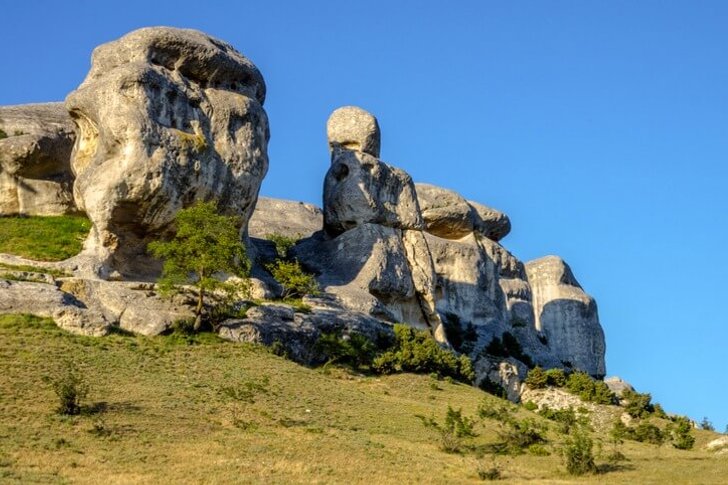
Sphinxes of the Karalez Valley
Blocks of stone on the Uzun-Tarla hill, located near the village of Zalesnoye near Bakhchisaray. The formations reach a height of 10-15 meters. Together with the rock, their size reaches 300 meters above sea level. Depending on the time of day, the statues "change" their appearance and resemble either stone figures from Easter Island or frozen fairy-tale characters. It all depends on the imagination of the beholder and on the lighting.

Mount Besh-Kosh
Besh-Kosh is a low rocky ridge made of limestone rocks, which is located on the eastern outskirts of Bakhchisarai. The view of the plateau opens just behind the last city houses. As a result of archaeological excavations in the Besh-Kosh area, traces of a settlement of the Taurians who lived on the peninsula in the 8th-7th centuries were found. BC. The ridge is the natural boundary of the picturesque Biyuk-Ashlamama-Dere valley.
